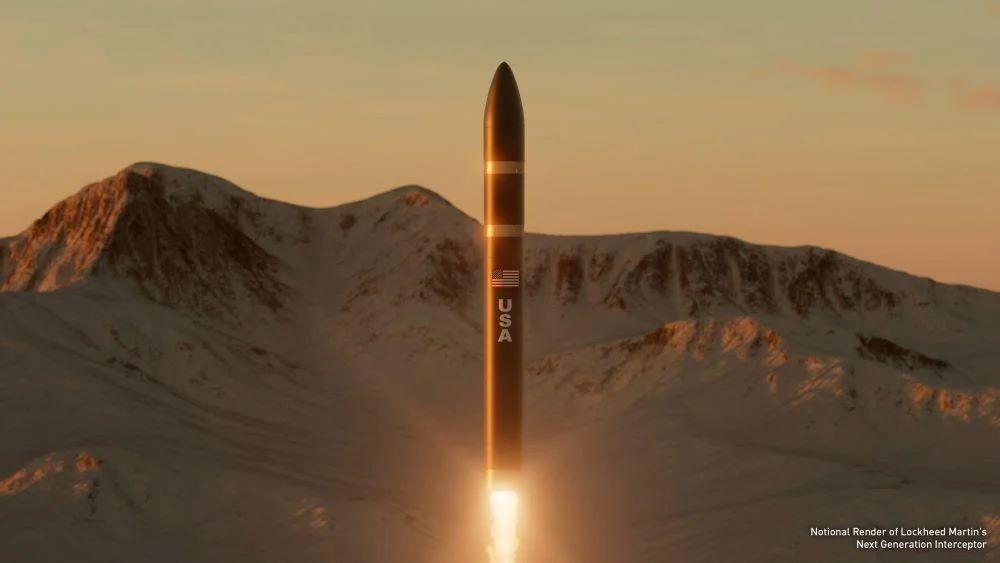
Rendering of the Next Generation Interceptor.
HUNTSVILLE, Alabama—Lockheed Martin is prioritizing keeping the Next Generation Interceptor (NGI) program on track for the target deployment in 2028, as a government watchdog has raised concerns that the Missile Defense Agency (MDA) is taking a risky approach.
Lockheed in April won the NGI contract award, claiming a program that will be worth up to $17 billion to protect the U.S. homeland from intercontinental ballistic missiles. MDA made the selection early, making the choice ahead of critical design reviews (CDR) based on budget constraints.
MDA’s push to speed up the program, spurred by congressional influence, includes a fielding date of 2028. While both Lockheed Martin and Northrop Grumman, which competed for the contract, have been confident they would meet the target, the Government Accountability Office in a June report said the approach could force budget pressures and delays.
Todd Stevens, the director of advanced programs for NGI at Lockheed Martin, said in an interview at the Space and Missile Defense Symposium here that the company is “doing everything we can to keep the schedule and look for acceleration.”
Since taking the award in April, the company is in a transition period between technology development and product development ahead of a CDR expected in fiscal 2025. The company has gone through multiple iterations of hardware for the interceptor, including demonstrating its propulsion, sensors, communications and process.
The company expects to move to ground testing quickly after the CDR, with flight test not long after that.
The GAO report claimed MDA’s schedule was risky based on prior agency programs, which typically moved to flight testing at least one year later than the current schedule. Stevens says Lockheed’s NGI approach is using digital engineering to try to learn and correct issues earlier in the program. It is using lessons from previous programs like the Redesigned Kill Vehicle, such as a move to radiation test all electronic components earlier so the preliminary design review (PDR) process would proceed with more confidence.
“As MDA looks across our critical technologies for technology readiness and manufacturing readiness, industry has to put forward proof of capability that’s tangible and tractable and evidence-based to win over our government customer to allow us to proceed,” Stevens says.
The GAO also warned of cost increases in the hundreds of millions, though it noted the overall cost was within the program’s threshold. The MDA told the office that this is partly linked to contractors buying multiple parts and other steps taken early to try to mitigate schedule risk and increasing costs linked to supply chains.
“NGI development is primarily executed through cost-reimbursement contract line items, where the government pays contractors for the total allowable incurred cost, to the extent prescribed in the contract,” the GAO says. “However, program officials indicated that they do not believe trading cost for schedule is sustainable going forward.”
Stevens also points out that the proposal was bid in 2020 amid the COVID-19 pandemic, and included a scope through 2028. Because of the timing, it did not take into account inflation pressures that have since emerged.
“We’re very focused on affordability as we go forward, recognizing the top-line challenges our customers face in real dollar terms,” Stevens says.





